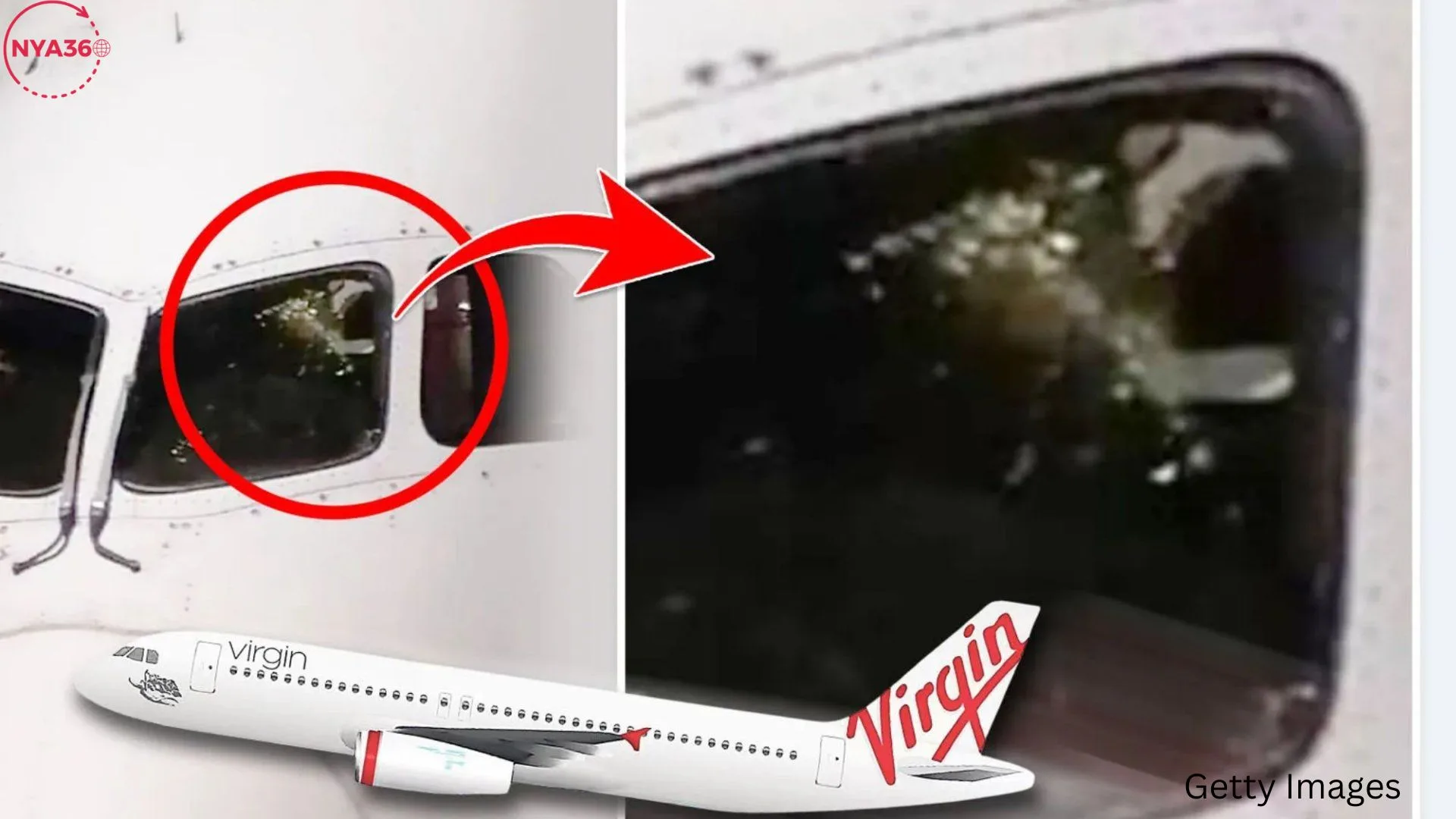During a trip from Heathrow to San Francisco, a Boeing 737-800 encountered a significant event when its windscreen developed a fracture at an altitude of 40,000 feet. The occurrence, which occurred on May 27th, left the cockpit crew in a state of distress and has subsequently perplexed investigators as they try to ascertain the reason for the damage.
Virgin Flight VS41, a transatlantic flight operated by Virgin Atlantic, experienced a problem around three hours after it started. Currently, the airplane was in flight over the isolated region between Greenland and Iceland, considered one of the most distant sections of its voyage. Subsequent photographs depict a primary window panel on the aircraft with numerous fractures and indentations, prompting instant apprehension regarding the safety and structural soundness of the plane.
The windscreen of a Boeing 737-800 is composed of four layers of glass, specifically engineered to endure the high pressures and harsh conditions experienced during flight. The occurrence of substantial cracks in this sturdy framework during flight at a specific altitude has led to a thorough examination by aviation specialists. Upon spotting the damage, the cockpit crew promptly evaluated the situation. Recognizing the gravity and probable danger, they decided to change direction and go back to the United Kingdom. The aircraft safely touched down at Heathrow Airport, and all passengers alighted without any untoward events.

An unidentified passenger on the flight commended the crew’s professionalism. “The pilot calmly communicated the situation to us and reassured everyone that we were returning to Heathrow for safety purposes.” Notwithstanding the disconcerting news, the crew managed the situation exceptionally, and there was no sense of panic among the passengers. Given the plane’s height of 40,000 feet, which is much beyond the flying range of any bird, experts have eliminated the possibility of a bird attack as the origin of the damage. Furthermore, there were no indications of any exterior collisions caused by things such as drones or debris. The temperature during the incident was around -50 degrees Celsius (-58 degrees Fahrenheit), which is a common but harsh situation for transatlantic flights.
Preliminary examinations indicate that the outermost layer of the windscreen sustained most of the damage, exhibiting several cracks and a few noticeable dents. The preservation of the inner layers was crucial for preserving cabin pressure and guaranteeing the flight’s safety. John Carr, a specialist in aviation safety, offered valuable perspective on the intricacies of such occurrences. Aircraft windscreens are designed to endure substantial stress, such as variations in pressure and severe temperatures. An occurrence of this nature is infrequent and typically indicates either the deterioration of materials or flaws in the manufacturing process. Nevertheless, it is premature to make conclusive judgments without conducting a comprehensive examination.
Another aspect of inquiry involves potential maintenance concerns. Dr. Emily Harper, an expert in aeronautical engineering, highlighted the significance of conducting routine inspections. “Regular maintenance is essential for the proper functioning and longevity of aircraft components.” Even the slightest oversight can occasionally result in unforeseen failures. Due to the stringent criteria of the aviation sector, these occurrences are fortunately infrequent, however, they emphasize the necessity for continual alertness.
The occurrence has prompted inquiries over the existing examination and upkeep procedures for aircraft windscreens, specifically for those operating on high-altitude, long-duration routes. Virgin Atlantic has fully collaborated with investigators, offering complete cooperation by providing all essential data and granting access to the aircraft for thorough checks. The airline released a statement expressing their relief that there were no injuries and that the crew’s quick response guaranteed a safe return to Heathrow. “Ensuring safety is our highest concern, and we are collaborating closely with aviation authorities to ascertain the cause of this incident.” We praise our personnel for their exemplary professionalism and prompt reaction.

For passengers, the incident serves as a reminder of the inherent hazards linked with air travel, despite its image as one of the most secure forms of transportation. “The experience was frightening,” stated a passenger, “however, observing the crew’s proficient management of the situation instilled confidence in their competence to handle emergencies.” The fractured windscreen of Virgin Flight VS41 at an altitude of 40,000 feet poses a unique yet crucial scenario for aviation safety specialists. Although the crew’s prompt response successfully reduced the immediate risk, the root causes of the windscreen failure are still being investigated. The aviation community eagerly anticipates the conclusive study, which is expected to offer valuable insights into how to prevent such catastrophes from occurring in the future.
The ongoing inquiry highlights the need for strict safety measures and the remarkable expertise of flight crews in handling problems that occur during flights. The successful return of Flight VS41 serves as evidence of the unwavering determination and expertise of those responsible for maintaining the safety of air travel daily.
Follow us on social media: Instagram, Threads & Twitter X @nya360_ YouTube & Facebook @nya360.





